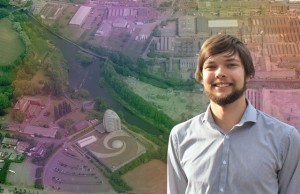University of Leicester launches air quality mapping project
‘Landmark’ PhD project aims to better understand the effect of nitrogen dioxide on people living in cities
A project which aims to ‘end arguments’ over which cities have the most polluted air has been launched by the University of Leicester and aerial mapping company Bluesky.
Currently studying at Leicester for his PhD in atmospheric physics, Jordan White is being sponsored by Bluesky to lead a ‘landmark’ new project will use state-of-the-art techniques to measure air pollution in urban environments.
It is hoped the project, part of an ongoing partnership between Bluesky and the University of Leicester, will provide a quantitative understanding of nitrogen dioxide levels in a given city.
The project will build on results from previous trials of the University of Leicester’s Compact Air Quality Spectrometer — a device which is mounted on a dedicated aerial survey aircraft to monitor visible light and measures how much light is lost at specific wavelengths when absorbed by nitrogen dioxide (see airqualitynews.com story).
The technology has previously been used as part of the CityScan project with devices mounted to tall buildings in Leicester, Bologna and London during the 2012 Olympics to build 3D maps of pollution across cities.
In addition, the project will use data from a network of ground-based air quality sensors — sponsored by UK-based Bluesky — as well as geospatial information such as Bluesky’s 3D building models and National Tree Map data.
Mr White said: “By exploring the complex concepts of gas-phase tomography we can retrieve 3D structures of pollution. This combined with improvements in the performance and integration of the monitoring systems gives us a much better understanding of the levels and movement of air pollution in our cities.”
Dr Roland Leigh, academic supervisor at the University of Leicester, said: “Air Quality continues to be a critical issue in our society, requiring innovative solutions to both measure and reduce pollutant concentrations. This project builds on key academic expertise in instrument design and data manipulation, and once again benefits from a strong industrial partnership with Bluesky.”
Bluesky
James Eddy, Bluesky’s technical director and industrial associate at the University of Leicester, said: “The latest stage in the research into air pollution modelling is designed to improve the way the monitoring systems work together in order to measure pollution levels as well as looking at vertical mixing ratios of air in cities and the potential impact of buildings and trees.”
The research project is part of a regional doctoral partnership funded by the Natural Environment Research Council (NERC) through the Industrial CASE (Collaborative awards in science and engineering) Studentship programme.
















